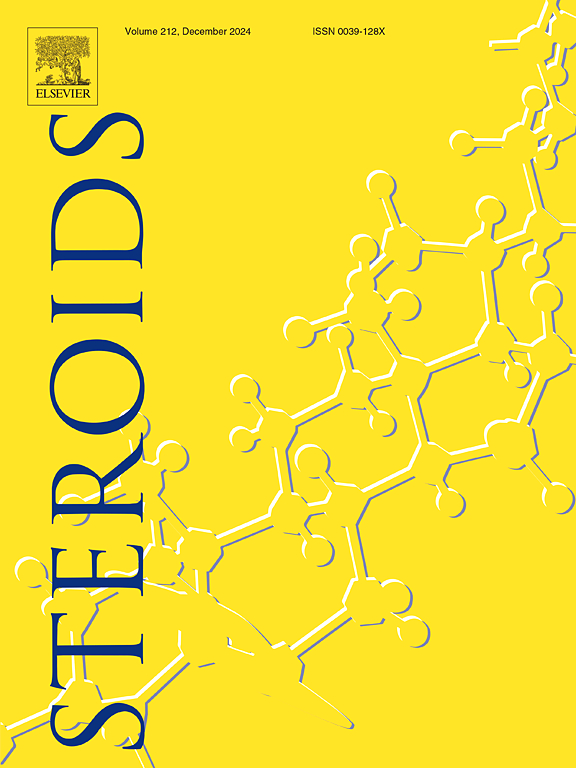Allosteric communications between domains of nuclear receptors
IF 2.1
4区 医学
Q4 BIOCHEMISTRY & MOLECULAR BIOLOGY
引用次数: 0
Abstract
Nuclear receptors (NRs) regulate gene expression in response to hormonal signals, influencing diverse physiological processes and diseases. Structural and dynamics investigations based on X-ray crystallography, cryo-electron microscopy (cryo-EM), hydrogen–deuterium exchange mass spectrometry, and molecular dynamics simulations, have significantly deepened our understanding of the conformational states, dynamics, and interdomain interactions of multi-domain NRs. Structural studies have examined heterodimeric complexes such as peroxisome proliferator-activated receptor gamma (PPAR-γ) with retinoid X receptor alpha (RXRα), liver X receptor beta (LXRβ) with RXRα, and retinoic acid receptor beta (RARβ) with RXRα, as well as homodimers like hepatic nuclear factor 4 alpha (HNF-4α), androgen receptor (AR), and glucocorticoid receptor (GR). These investigations highlight critical allosteric communication between ligand-binding domains (LBDs) and DNA-binding domains (DBDs), emphasizing the roles of flexible hinge regions and N-terminal segments in adapting to diverse DNA configurations. Both non-steroid receptor heterodimers and homodimers exhibit robust interdomain connections that mediate allosteric signaling. For instance, AR demonstrates three distinct conformational states that underscore its dynamic behavior, while GR exhibits unique ligand-dependent domain interactions shaping receptor signaling. The collective findings so far suggest a conserved mechanism of cross-domain communication across the NR family. Supported by complementary biophysical, spectroscopic, mutagenesis, and computational studies, this body of research has elucidated the nature of domain-domain interfaces and their pivotal roles in regulating the transcriptional activity of steroid and non-steroid receptors.
核受体区域间的变构通信。
核受体(NRs)通过调节基因表达来响应激素信号,影响多种生理过程和疾病。基于x射线晶体学、低温电子显微镜(cryo-EM)、氢-氘交换质谱和分子动力学模拟的结构和动力学研究,极大地加深了我们对多畴核磁共振的构象状态、动力学和畴间相互作用的理解。结构研究已经检查了异二聚体复合物,如过氧化物酶体增殖物激活受体γ (PPAR-γ)与类视黄醇 X 受体α (RXRα),肝脏 X 受体β (LXRβ)与RXRα,视黄酸受体β (RARβ)与RXRα,以及同型二聚体如肝核因子4α (HNF-4α),雄激素受体(AR)和糖皮质激素受体(GR)。这些研究强调了配体结合域(lbd)和DNA结合域(DBDs)之间的关键变构通信,强调了柔性铰链区域和n端片段在适应不同DNA构型中的作用。非类固醇受体异二聚体和同二聚体都表现出强大的区域间连接,介导变构信号传导。例如,AR表现出三种不同的构象状态,强调其动态行为,而GR表现出独特的配体依赖结构域相互作用,形成受体信号。到目前为止,这些研究结果表明,在NR家族中存在一种保守的跨域通信机制。在生物物理、光谱学、诱变和计算研究的支持下,这一领域的研究已经阐明了结构域-结构域界面的本质及其在调节类固醇和非类固醇受体转录活性中的关键作用。
本文章由计算机程序翻译,如有差异,请以英文原文为准。
求助全文
约1分钟内获得全文
求助全文
来源期刊

Steroids
医学-内分泌学与代谢
CiteScore
5.10
自引率
3.70%
发文量
120
审稿时长
73 days
期刊介绍:
STEROIDS is an international research journal devoted to studies on all chemical and biological aspects of steroidal moieties. The journal focuses on both experimental and theoretical studies on the biology, chemistry, biosynthesis, metabolism, molecular biology, physiology and pharmacology of steroids and other molecules that target or regulate steroid receptors. Manuscripts presenting clinical research related to steroids, steroid drug development, comparative endocrinology of steroid hormones, investigations on the mechanism of steroid action and steroid chemistry are all appropriate for submission for peer review. STEROIDS publishes both original research and timely reviews. For details concerning the preparation of manuscripts see Instructions to Authors, which is published in each issue of the journal.
 求助内容:
求助内容: 应助结果提醒方式:
应助结果提醒方式:


